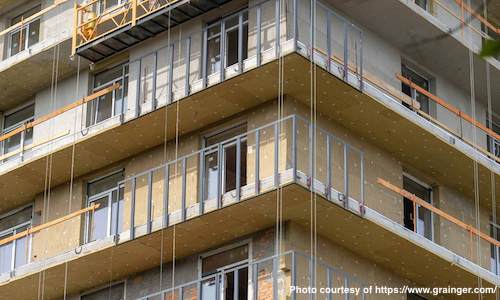
New York’s recently introduced law LL97 will require many retrofit projects. How can energy modeling be made more scalable and more manageable for retrofit projects?
-Big Apple Energy Modeler
Dear Big Apple,
First off, let me start by saying that I think that LL97 is a step in the right direction, as buildings are responsible for 30-40% of the greenhouse gas emissions mainly due to the energy needed for heating and cooling. Starting 2024, LL97 places carbon emission limits on most buildings across NYC. These limits will become more stringent over time, with the objective to reduce greenhouse gas emissions by 80%. I also invite you to go back and read Alex Nutkiewicz’s message from 9/15/20 on why energy modelers should be focusing on existing buildings to battle climate change. Energy modelers will likely be on the frontline to transform the existing building stock into a low carbon one. Better get ready 🙂
Retrofit projects are in some sense trickier to model than new projects because, well, there is already a building, and we need to estimate potential savings given certain upgrades (windows, insulation, more efficient equipment, etc). That means that we first need to establish a baseline model that somewhat reflects the current state and allows us to project savings with a certain accuracy—or more like within some given error bounds. This baseline requires data. Data come in all shapes and forms: operational/smart meter data, construction data, inspection walkthroughs, localized IoT deployments and measurements, retrofit measures undertaken and results. So one way to support the energy modeling efforts for retrofitting is to ensure that data can be collected, stored, retrieved and compared across projects. As many projects will likely be similar, a well organized database could help identify similarities between projects, fill in the blanks where necessary, or make educated guesses. Ideally such a database could be centralized and shared between firms, where possible, so that data can be collected at a large scale, and machine learning models could be used to identify patterns. NYC has already a nice benchmark database for energy and water use intensity, and integrating retrofit results and performance should be a next logical step. But I digress.
The point of collecting all that data is of course to be able to calibrate the energy models. Calibration is really just a fancy word for tweaking, i.e., you adjust parameters in your model until the model’s prediction and the data are in agreement. Once we’re happy, we can then manipulate the model with energy saving interventions to project energy savings. Calibration methods have become fancier over the time. The newest kid on the block is Bayesian or probabilistic calibration techniques, which are very powerful, but also computationally intensive.
All these, the need for data storage, management and computation for calibration only allow one conclusion: Energy modeling methods need to go into the cloud. As Mostapha Sadeghipour Roudsari wrote in his excellent essay on simulation in the cloud on 11/17/2020 (check it out!), there are two main themes: the one-click simple automation procedure, and a mass customization of expertise approach. What I believe we will see in NY is the latter, but tailored to this specific problem of retrofitting NY, a “RetrofitNY Cloud” if you want, where the best practices of the process will/should be collected and preserved for the next project to learn from.
Lastly, don’t forget this is not a sprint, but rather a marathon. There are many opportunities to learn and adjust. Best practices are likely not ready or specific enough for NY, but rather will emerge over time. I guess in some meta way, we need to gather some data on first retrofit results and then adjust—or calibrate—our process.
Zoltan Nagy, PhD
Assistant Professor, The University of Texas at Austin
nagy@utexas.edu, http://nagy.caee.utexas.edu
Do you have anything to add or your own answer to contribute? Please share your thoughts by emailing askamodeler@ibpsa.us; you are an expert too! Do you have your own question for the expert? Submit your question to be considered for a future column. Note that questions requiring an immediate response should be submitted to the community of experts at unmethours.com. If you are interested in replying to a question as a featured expert or have any other feedback about Ask a Modeler please email askamodeler@ibpsa.us.


